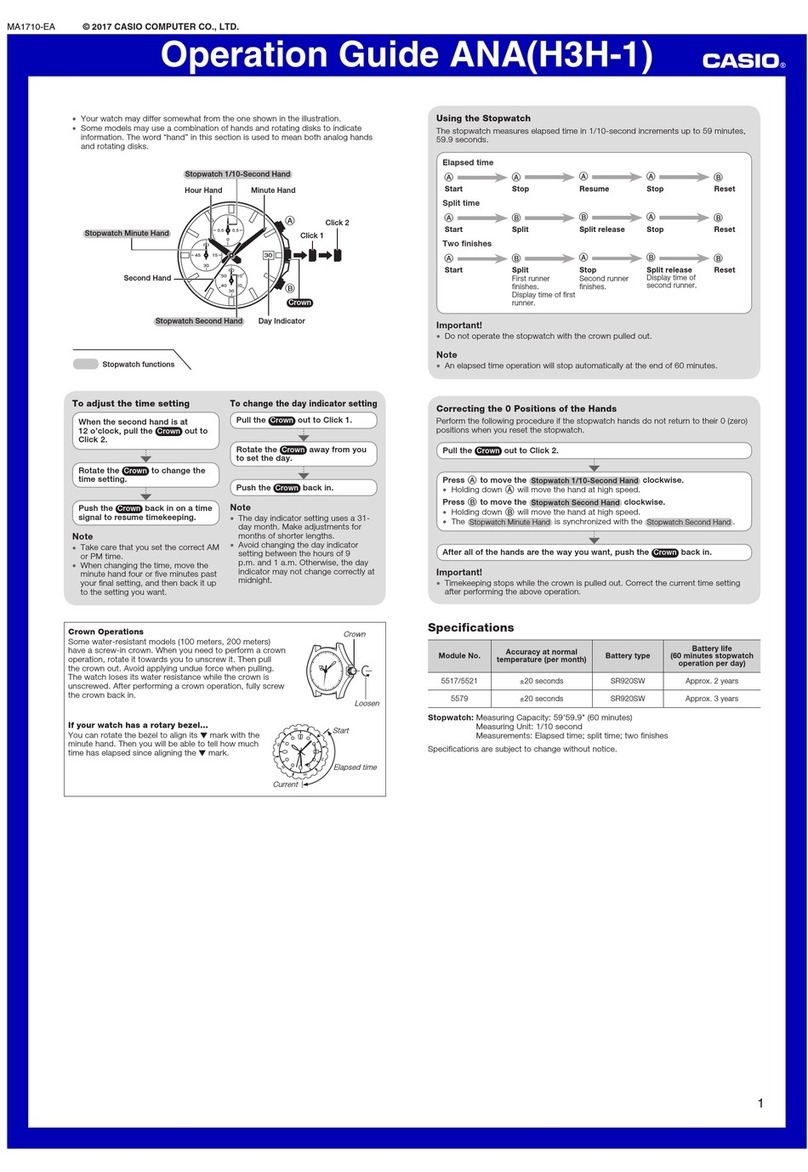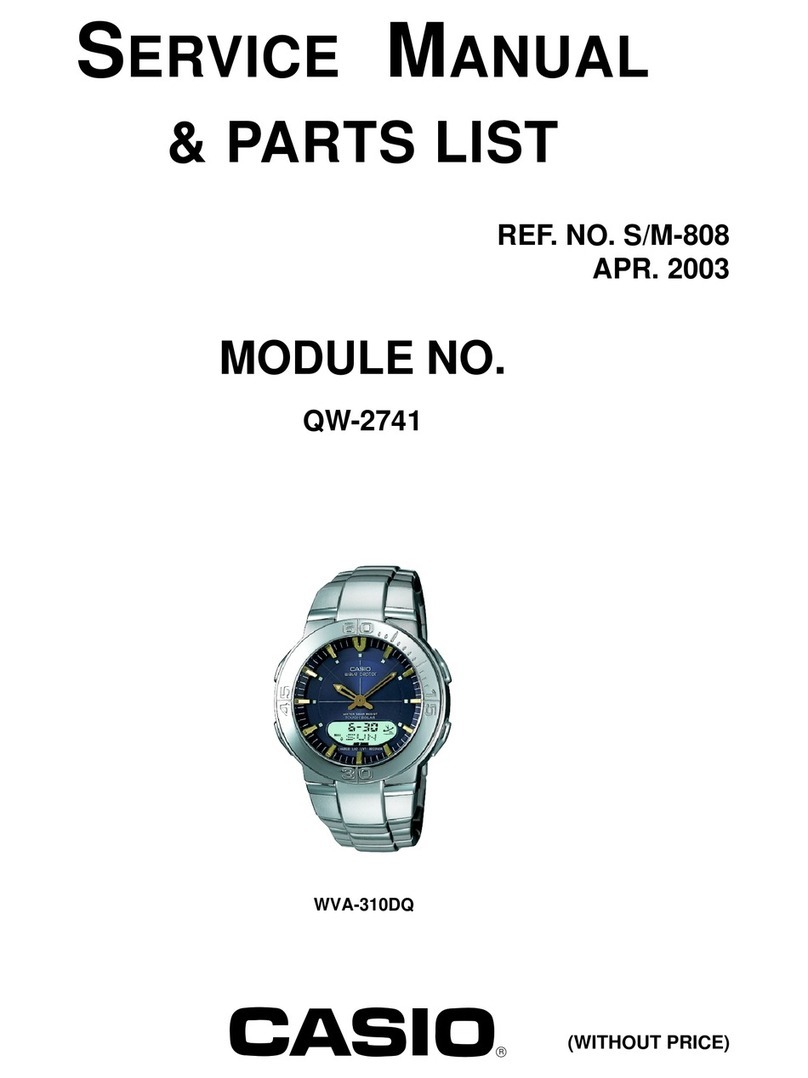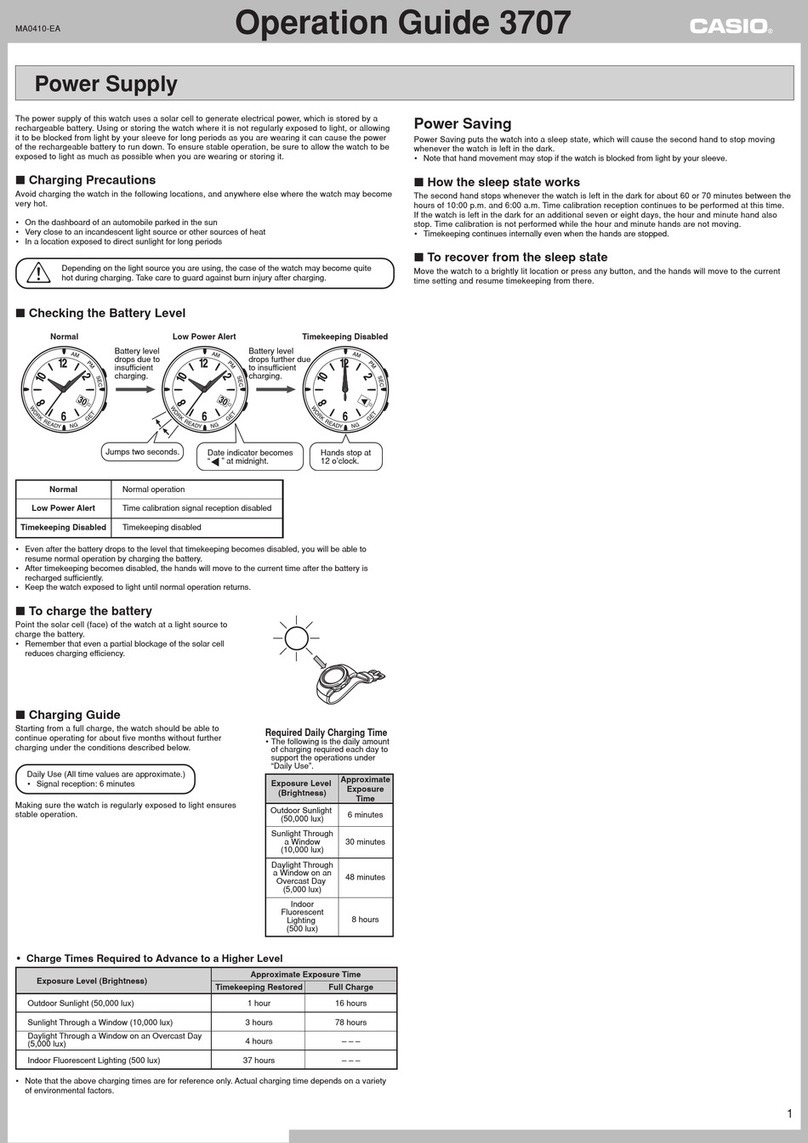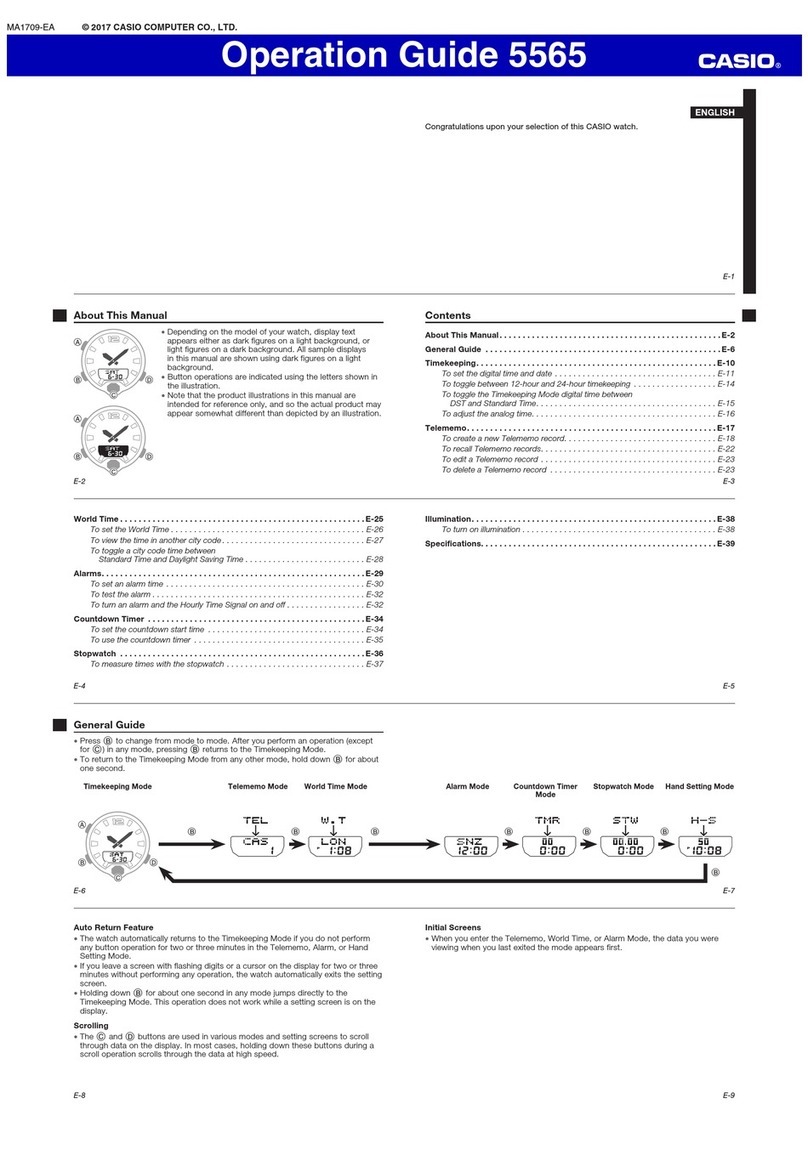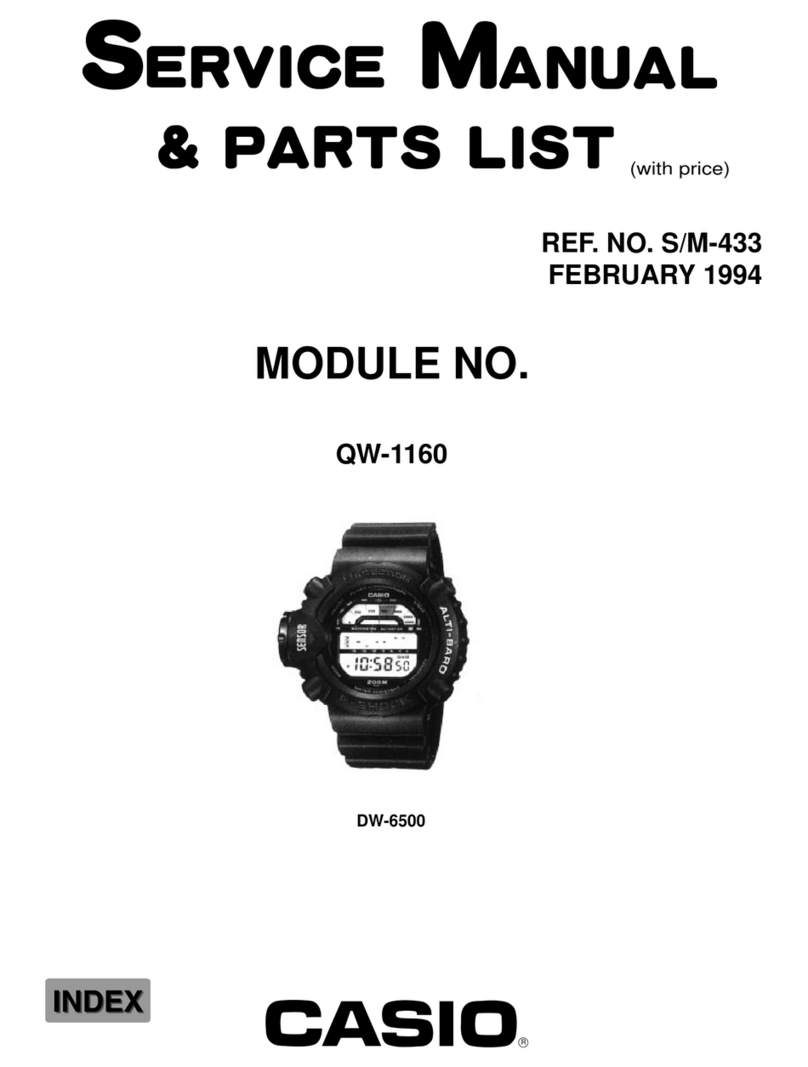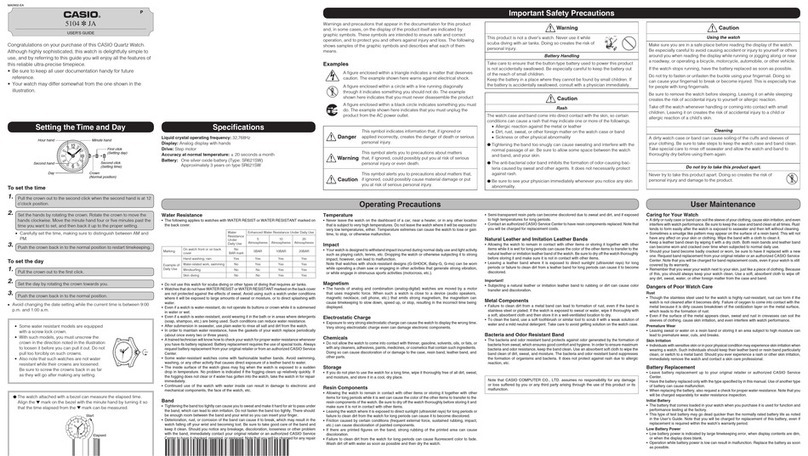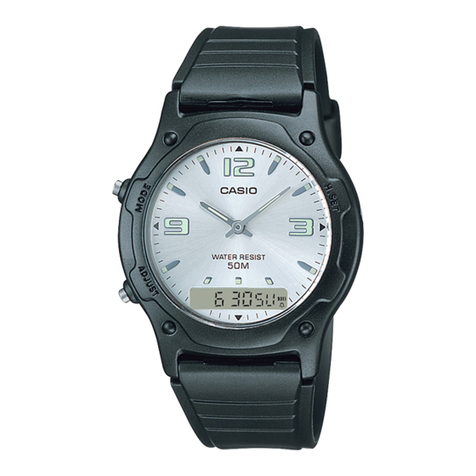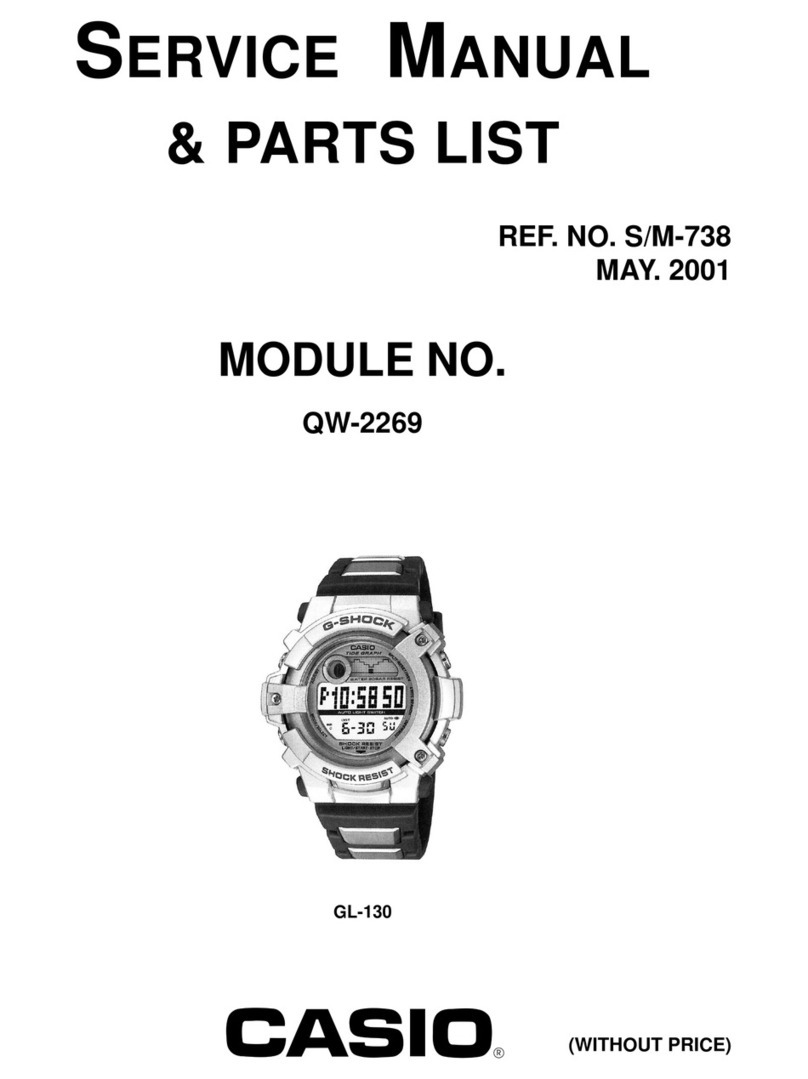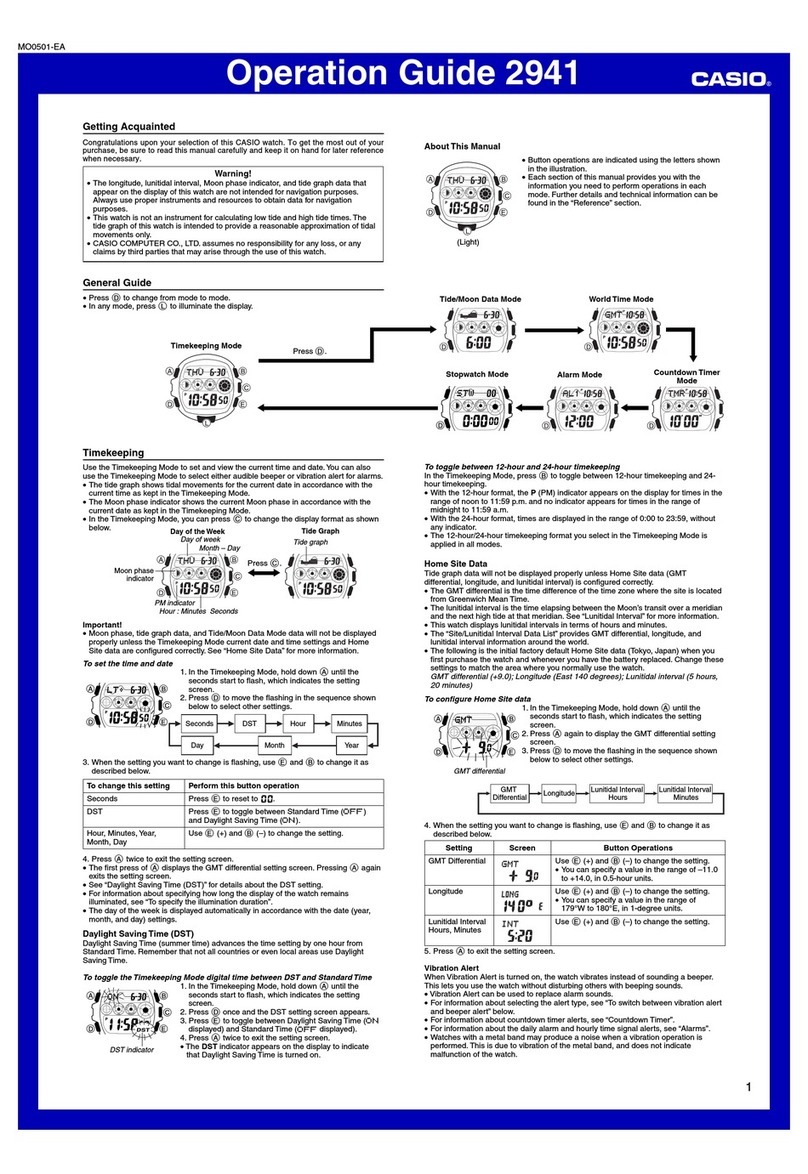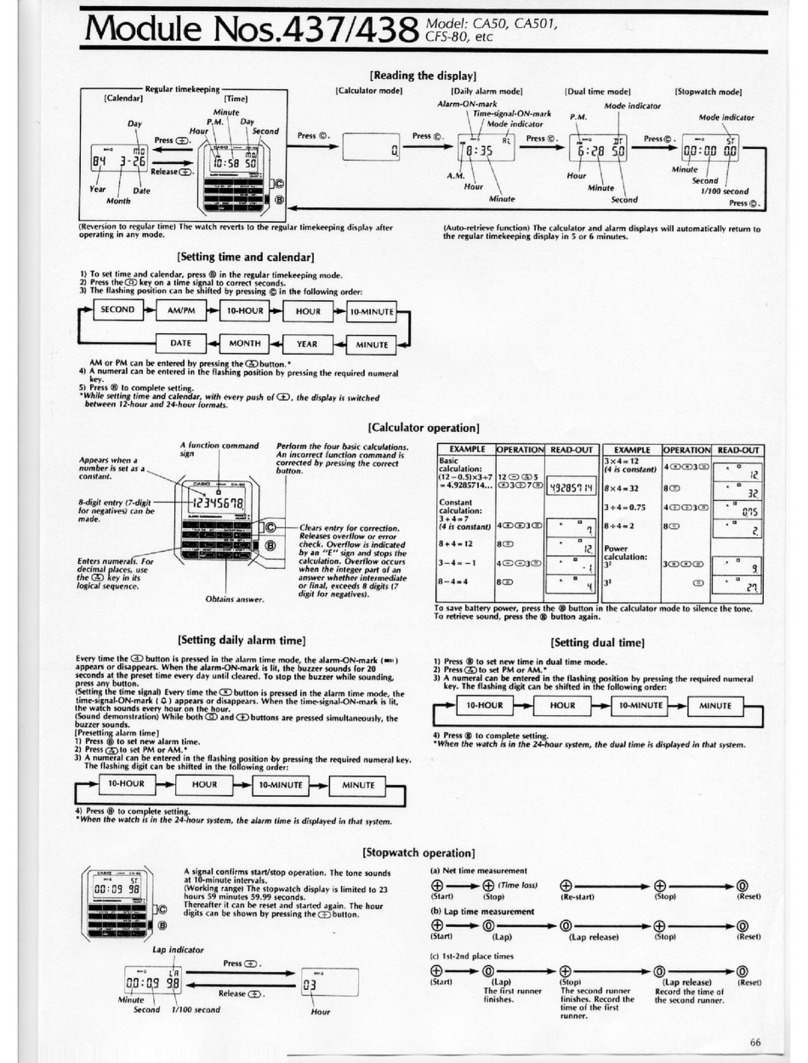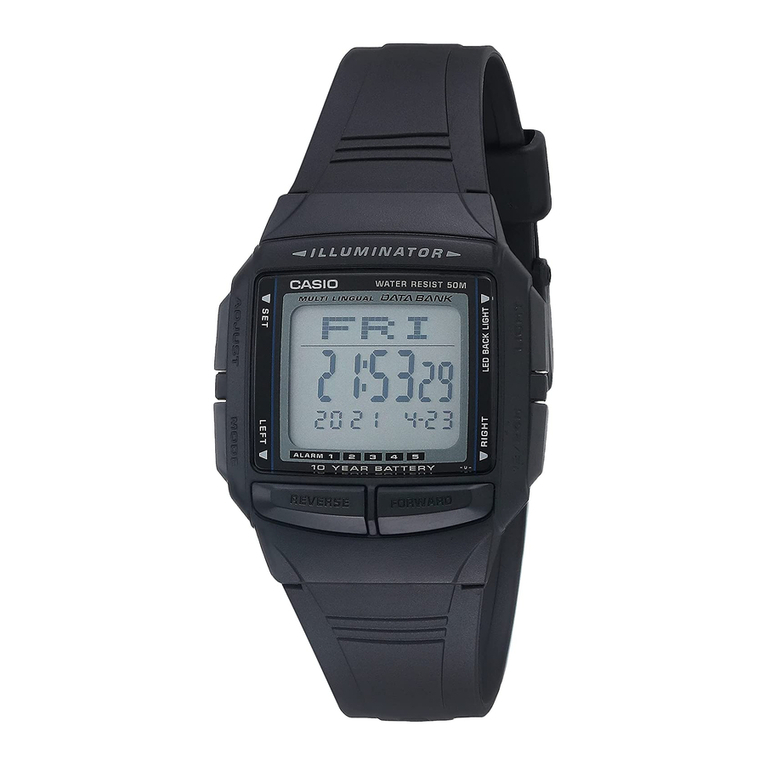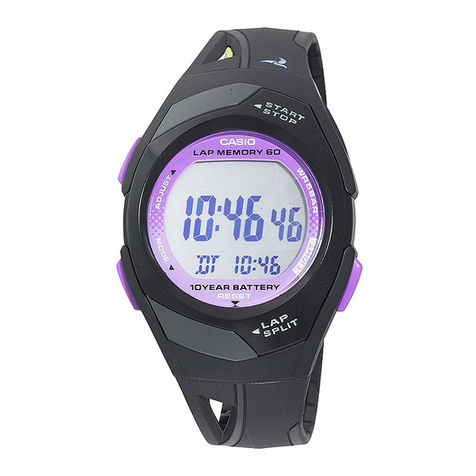
2
USER’S GUIDE 2581/2671
Turning Auto Reception On and Off
1. Display the setting screen.
In the Timekeeping Mode:
Use the AA
AA
Abutton to
display the “ ”
indicator, and then press
the BB
BB
Bbutton.
This causes the current setting
(On or OF) to appear on the
display.
2. Turn auto reception on or off.
Press CC
CC
Cor AA
AA
Ato toggle
the auto reception setting
on (On) and off (OF).
Viewing the Last Reception Date and Time
In the Timekeeping Mode:
Press the BB
BB
Bbutton.
This displays the date and time that signal reception was
complete and the current time and date were adjusted.
The month and day screen and hour and minute screen alternate
at two-second intervals.
To return to the timekeeping screen, press the Bbutton again.
The display also returns to the normal timekeeping screen
automatically if you do not perform any operation for about one or
two minutes.
2-second
interval
Home Time
(24-hour format)
Reception date and time
Important!
The calibration signals received by this watch include two data
groups: an hour-minute-second group and a year-month-day group.
The icon will remain on the display only if the hour-minute-
second group and year-month-day group are both received. It will
not remain on the display if only the hour-minute-second group is
received.
Specifying the Transmitter
Selection Mode in Japan
When Tokyo (TYO) is selected as the Home City, you can select
either of two different transmitters for reception.
The initial factory default settings of the watch are TYO (Tokyo) for
the Home City, and A/T (auto) for the transmitter selection mode.
1. Display the setting screen.
In the Timekeeping Mode:
Use the AA
AA
Abutton to
display the “ ”
indicator, and then press
the BB
BB
Bbutton.
This causes the current auto
reception setting (On or OF) to
appear on the display.
2. Display the transmitter selection mode setting screen.
Press the BB
BB
Bbutton.
3. Exit the setting screen.
Press the BB
BB
Bbutton 11 times.
This exits the setting screen can causes “ ” to appear
on the display. To return to the timekeeping screen, press the
Cbutton once (or the Abutton six times).
The display also will return to the normal timekeeping screen
automatically if you do not perform any operation for about
two or three minutes.
Calibration Signal Reception
Precautions
Auto reception can be performed while the watch is in the
Timekeeping Mode or World Time Mode only.
Operating any button while auto reception is in progress will cause
the watch to beep and then exit the receive operation.
Make sure you are within the range of the calibration signal
transmitter before performing the receive operation. Remember
that geographic contours, nearby buildings, the season, and the
time of day can make reception impossible even when you are
within range of the transmitter.
Proper reception may be impossible if there is something blocking
the signal. If reception is unsuccessful, try again.
This watch is designed to adjust its current time setting in
accordance with the calibration signals transmitted in Japan and
the United States only. Note that you will need to make your own
adjustments when using this watch outside of Japan or the United
States, or in any area that is outside the range of one of the
receivable time calibration signal transmitters.
When the watch is unable to adjust its time signal using the
calibration signal for some reason, timekeeping accuracy is within
±15 seconds per month.
Strong electrostatic charge can cause timekeeping error.
Signal reception is cancelled if an alarm starts to sound while it is
being performed.
The watch’s calendar shows dates up to the year 2039. Attempting
a receive operation after that causes an error.
3. Select the transmitter selection mode you want.
Use CC
CC
Cand AA
AA
Acycle
through the settings until
the one you want is
displayed.
* A/T
With this setting, the watch automatically selects either the
Mt. Otakadoya signal (40kHz) or the Mt. Hagane signal
(60kHz), whichever is strongest.
*
The frequency first used by the watch is the one that was
last successful.
* JPN 40
With this setting, the watch always receives the Mt.
Otakadoya signal (40kHz).
* JPN 60
With this setting, the watch always receives the Mt. Hagane
signal (60kHz).
4. Exit the setting screen.
Press the BB
BB
Bbutton 10 times.
This exits the setting screen can causes “ ” to appear
on the display. To return to the timekeeping screen, press the
Cbutton once (or the Abutton six times).
The display also will return to the normal timekeeping screen
automatically if you do not perform any operation for about
two or three minutes.
(Back) (Forward)
Troubleshooting
Cannot perform manual reception.
Possible Cause: The watch is not in the Timekeeping
Mode or World Time Mode.
The Home City is set to a city other than
TYO (Tokyo), NYC (New York), CHI
(Chicago), DEN (Denver), or LAX (Los
Angeles).
Corrective Measures: Perform manual reception while a time
screen is on the display in the Timekeeping
Mode or World Time Mode only.
Change Home City To TYO (Tokyo), NYC
(New York), CHI (Chicago), DEN
(Denver), or LAX (Los Angeles).
The icon is not displayed even though auto reception is
turned on.
Possible Cause: A single receive operation was not
successful.
Both the hour-minute-second group and
year-month-day group were not received.
The watch is not in the Timekeeping
Mode or World Time Mode when an auto
reception time is reached.
You performed manual reception, which
clears the icon from the display.
Corrective Measures: Check to make sure the watch is in a
location where it can receive the signal.
Place the watch in a location where
reception conditions are good.
Make sure that the watch is in the
Timekeeping Mode or World Time Mode
during the auto reception times.
The icon disappears from the display
whenever you change the current time
setting manually.
displayed
not displayed
If only the hour-minute-second group is received, the Timekeeping
Mode date at the time of reception is recorded as the last reception
date.
Hour-minute-second group and year-
month-day group received
Hour-minute-second group only received
Time setting is incorrect following signal reception.
Possible Cause: Summer time is turned on or the wrong
Home City is selected.
Corrective Measures: Turn off summer time so the DST
indicator is not on the display.
Configure the watch for the correct DST
setting and Home City setting.
If you cannot receive the calibration signal or if the current time
setting is incorrect after signal reception, check the current setup
of the watch. The following are the watch’s factory default settings,
which are configured automatically whenever you have the battery
of the watch replaced.
Auto Receipt
Transmitter
Home City
Summer Time
On
Auto Japan transmitter select
(40kHz/ 60kHz)
Tok y o
Auto (according to signal data)
The following explanation covers the radio-controlled timekeeping function only.
For other functions, go to the download page for Module 2578,
which is the export model that has the same functions, except for radio-controlled timekeeping.

